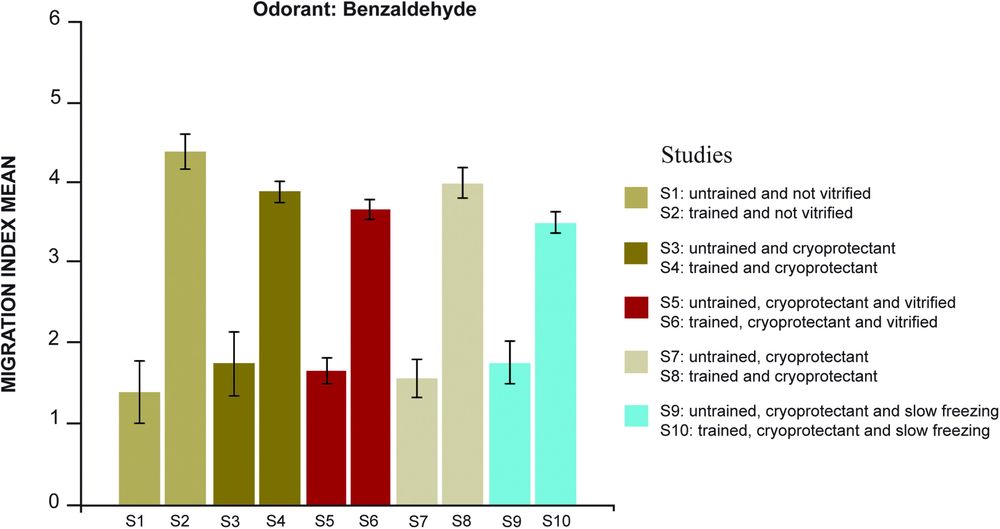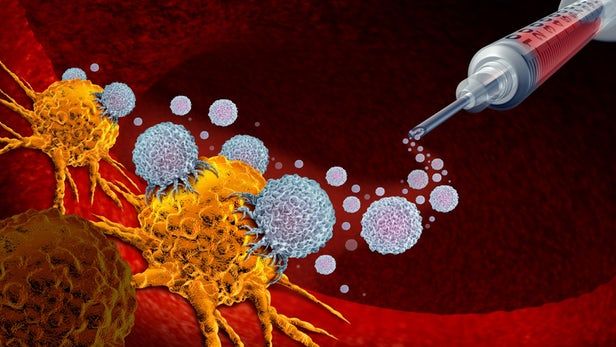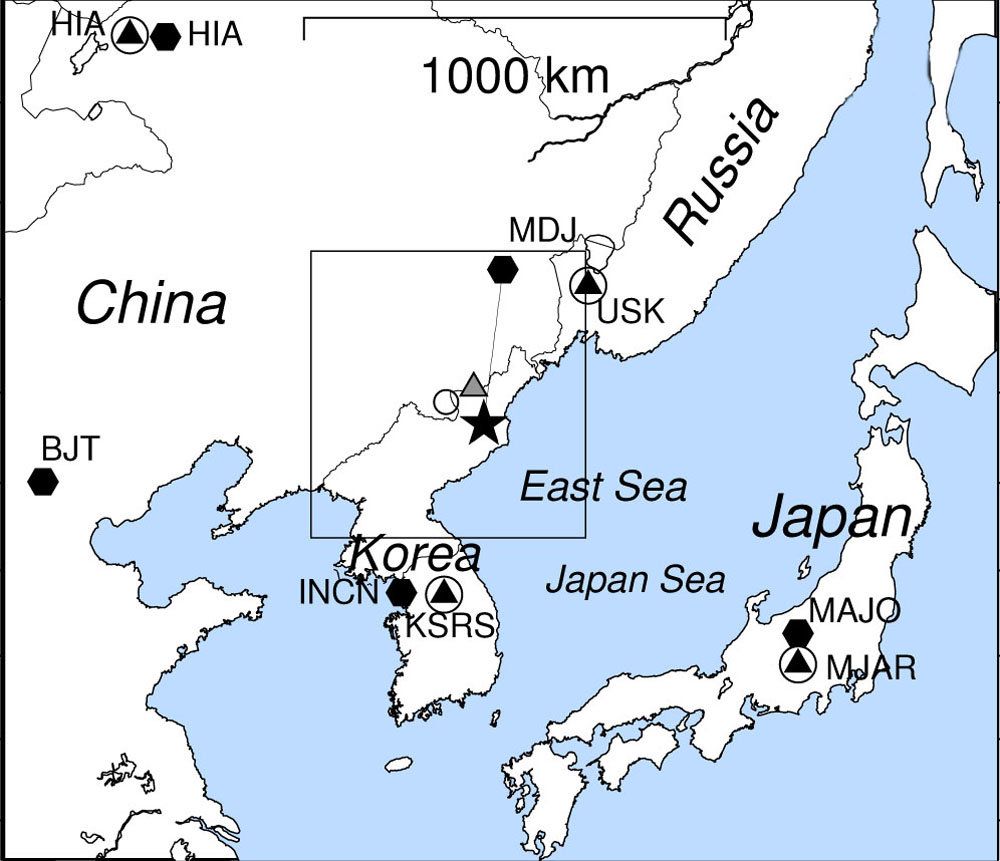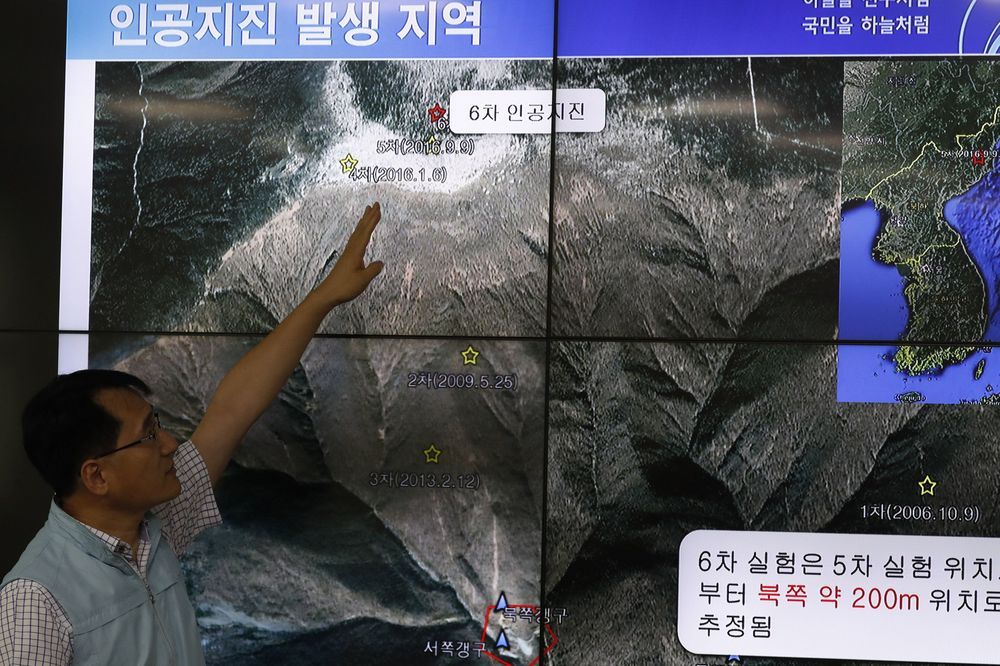Page 8842
Apr 28, 2019
The Scientific Reason Why Your Dog Might Secretly Love to Watch TV
Posted by Genevieve Klien in category: electronics
Apr 28, 2019
Fear the Man in the Middle? This company wants to sell quantum key distribution
Posted by Genevieve Klien in categories: futurism, quantum physics
Apr 28, 2019
Persistence of Long-Term Memory in Vitrified and Revived Caenorhabditis elegans
Posted by Paul Battista in category: life extension
Rejuvenation ResearchVol. 18, No. 5Original ArticlesOpen Access Open Access license Persistence of Long-Term Memory in Vitrified and Revived Caenorhabditis elegans Natasha Vita-More and Daniel Barranco Natasha Vita-MoreAlcor Research Center (ARC), Alcor Life Extension Foundation, Scottsdale, Arizona. U…
Apr 28, 2019
Tilly Lockey — the real life Alita: Battle Angel
Posted by Heather Blevins in categories: cyborgs, transhumanism

Tilly is the real life Alita. She uses her bionic arms as a sign of strength 🙌 www.openbionics.com/alita
Apr 28, 2019
Success in first phase of human trials for colorectal cancer vaccine
Posted by Quinn Sena in category: biotech/medical
Positive early results from the first phase of human testing for a unique colorectal cancer vaccine are proving promising. A newly published study outlining the Phase I trial results suggests the vaccine is safe, and stimulates immune activation, paving the way for larger human trials.
Apr 28, 2019
Machine learning expands to help predict and characterize earthquakes
Posted by Quinn Sena in categories: information science, robotics/AI
In a focus section published in the journal Seismological Research Letters, researchers describe how they are using machine learning methods to hone predictions of seismic activity, identify earthquake centers, characterize different types of seismic waves and distinguish seismic activity from other kinds of ground “noise.”
Machine learning refers to a set of algorithms and models that allow computers to identify and extract patterns of information from large data sets. Machine learning methods often discover these patterns from the data themselves, without reference to the real-world, physical mechanisms represented by the data. The methods have been used successfully on problems such as digital image and speech recognition, among other applications.
More seismologists are using the methods, driven by “the increasing size of seismic data sets, improvements in computational power, new algorithms and architecture and the availability of easy-to-use open source machine learning frameworks,” write focus section editors Karianne Bergen of Harvard University, Ting Cheng of Los Alamos National Laboratory, and Zefeng Li of Caltech.
Apr 28, 2019
North Korea’s 2017 bomb test set off later earthquakes, new analysis finds
Posted by Quinn Sena in categories: existential risks, military, physics
Using newly refined analysis methods, scientists have discovered that a North Korean nuclear bomb test last fall set off aftershocks over a period of eight months. The shocks, which occurred on a previously unmapped nearby fault, are a window into both the physics of nuclear explosions, and how natural earthquakes can be triggered. The findings are described in two papers just published online in the journal Seismological Research Letters.
The September 3, 2017 underground test was North Korea’s sixth, and by far largest yet, yielding some 250 kilotons, or about 17 times the size of the bomb that destroyed Hiroshima. Many experts believe the device was a hydrogen bomb—if true, a significant advance from cruder atomic devices the regime previously exploded. The explosion itself produced a magnitude 6.3 earthquake. This was followed 8.5 minutes later by a magnitude 4 quake, apparently created when an area above the test site on the country’s Mt. Mantap collapsed into an underground cavity occupied by the bomb.
The test and collapse were picked up by seismometers around the world and widely reported at the time. But later, without fanfare, seismic stations run by China, South Korea and the United States picked up 10 smaller shocks, all apparently scattered within 5 or 10 kilometers around the test site. The first two came on Sept. 23, 2017; the most recent was April 22, 2018. Scientists assumed the bomb had shaken up the earth, and it was taking a while to settle back down. “It’s not likely that there would be so many events in that small area over a small period of time,” said the lead author of one of the studies, Won-Young Kim, a seismologist at Columbia University’s Lamont-Doherty Earth Observatory. “These are probably triggered due to the explosion.”
Continue reading “North Korea’s 2017 bomb test set off later earthquakes, new analysis finds” »
Apr 28, 2019
Earthquake science could have predicted North Korea’s nuclear climbdown
Posted by Quinn Sena in categories: energy, existential risks, nuclear weapons, policy, science
Just days after North Korea announced it was suspending its testing programme, scientists revealed that the country’s underground nuclear test site had partially collapsed. This assessment was based on data gathered from smaller earthquakes that followed North Korea’s biggest nuclear test in 2017. A new study published in Science has now confirmed the collapse using satellite radar imaging.
The collapse may have played a role in North Korea’s change in policy. If correct, and with the hindsight of this research, we might have speculated that the North Koreans would want to make such an offer of peace. This shows how scientific analysis normally reserved for studying natural earthquakes can be a powerful tool in deciphering political decisions and predicting future policy across the globe.
In fact, another unusual earthquake in South Korea in 2017 also has the potential to affect geopolitics, this time by changing energy policy. “Seismic shift” may be a cliche often used by journalists and policymakers to describe changing political landscapes, but these recent earthquakes along the Korean Peninsula remind us there can really be authentic links between seismic events and global affairs.
Continue reading “Earthquake science could have predicted North Korea’s nuclear climbdown” »
Apr 28, 2019
Fortnite’s Earthquake Event Has Already Started
Posted by Quinn Sena in category: futurism
If you’ve been playing Fortnite in the past day or so, you may have heard a rumble. It’s a little one, right now—some players likely didn’t notice it amid a field of explosions and shotgun blasts—but it’s definitely happening. Social media is full of reports that the leaked Earthquake event is in fact already underway, albeit apparently in its very early stages. It’s unclear what’s going to happen or what’s going to come of it, but the fact that it’s already started makes it clear that this is happening now, not later.
We don’t know much about the earthquake yet, mostly because whatever files are going to be used to govern it are likely yet to come with next week’s patch. But we can assume that the tremors we’re feeling now are at the very low end of what’s to come, and leaked files indicate that they could get to be around 70 times stronger. It’s also not so much of a leap to assume that we’re going to get some cracks opening up throughout the map, and maybe even a volcano to balance out the icy biome that we got with season 7.
The earthquake would appear to be in some way tied to the Prisoner skin, who may be some sort of disgraced Fire King reclaiming his throne. Traditionally the challenge skin plays some role in ushering in the next season, and he may be on his way to summon up some grand fire storm akin to the ice storm from earlier in the season, or something like that. An earthquake follows from that and offers up a chance to transform the map on a fairly grand level: as big as the ice biome was, the rest of the map was relatively unaffected save the addition of ziplines.
Continue reading “Fortnite’s Earthquake Event Has Already Started” »
















